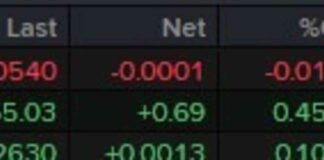China’s October Consumer Price Index (CPI) data was released, showing a slight year-on-year increase of 0.3%. This is lower than the 0.4% reported in September and below the expectations of economists, who had predicted a 0.4% increase. The modest rise in CPI indicates ongoing weak consumer demand in China, keeping concerns about deflation alive. The country experienced a period of deflation for four months at the end of 2023, and the recent CPI data suggests that this trend may continue.
In addition to the CPI data, the Producer Price Index (PPI) for October showed a decline of 2.9% compared to the same period last year. This decrease in factory-gate prices is worse than the economists’ median forecast of -2.5% and indicates a continued deflationary trend in wholesale prices since late 2022. The combination of weak consumer demand and falling producer prices is a concerning sign for China’s economy.
In response to these economic challenges, Chinese lawmakers recently approved a plan to address local government debt. This plan aims to swap local government debt, a move that is intended to alleviate financial pressures on local governments. However, the announcement did not have the desired impact on the markets, as the Chinese yuan fell in response. The lack of enthusiasm from investors reflects broader concerns about the Chinese economy.
The economic backdrop in China is complicated by ongoing issues such as the property crisis, which is affecting consumer confidence. The country also experienced its slowest economic expansion in 18 months during the third quarter of the year. Additionally, there are potential concerns about U.S. tariffs under a possible Trump presidency, which could further impact China’s economy.
To address these challenges, the Chinese government has implemented various measures, including interest rate cuts and relaxed home purchasing restrictions. Premier Li Qiang has expressed confidence in meeting the 5% growth target for 2024, but there is a growing consensus that more consumer-focused stimulus measures may be necessary. These measures would aim to boost domestic demand and alleviate pressure on industries facing overcapacity, which is contributing to deflationary pressures in the economy.
Overall, the latest economic data from China paints a complex picture of ongoing challenges and the need for targeted policy responses. As the country grapples with weak consumer demand, falling producer prices, and external uncertainties, policymakers will need to carefully navigate these issues to support sustainable economic growth.

















